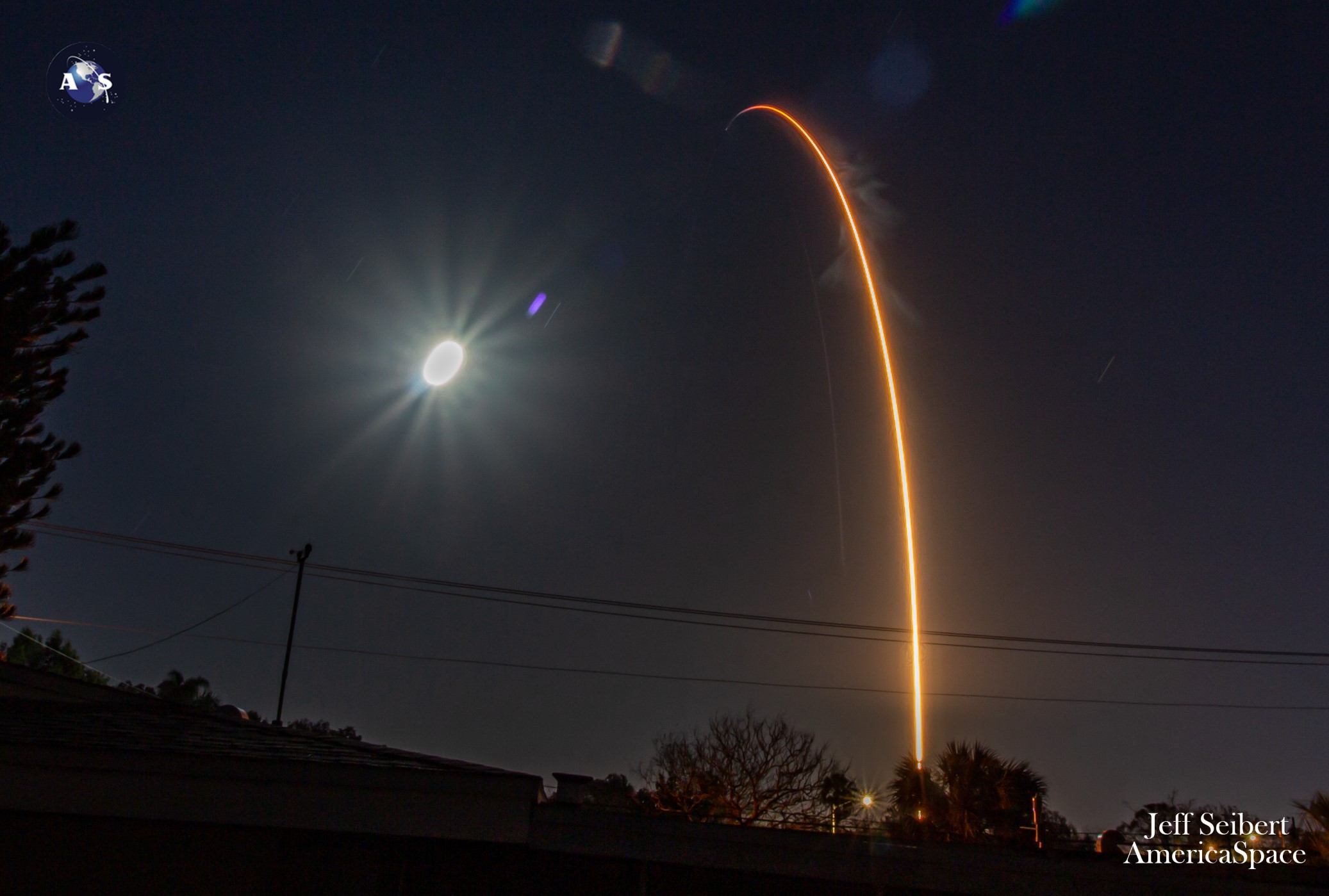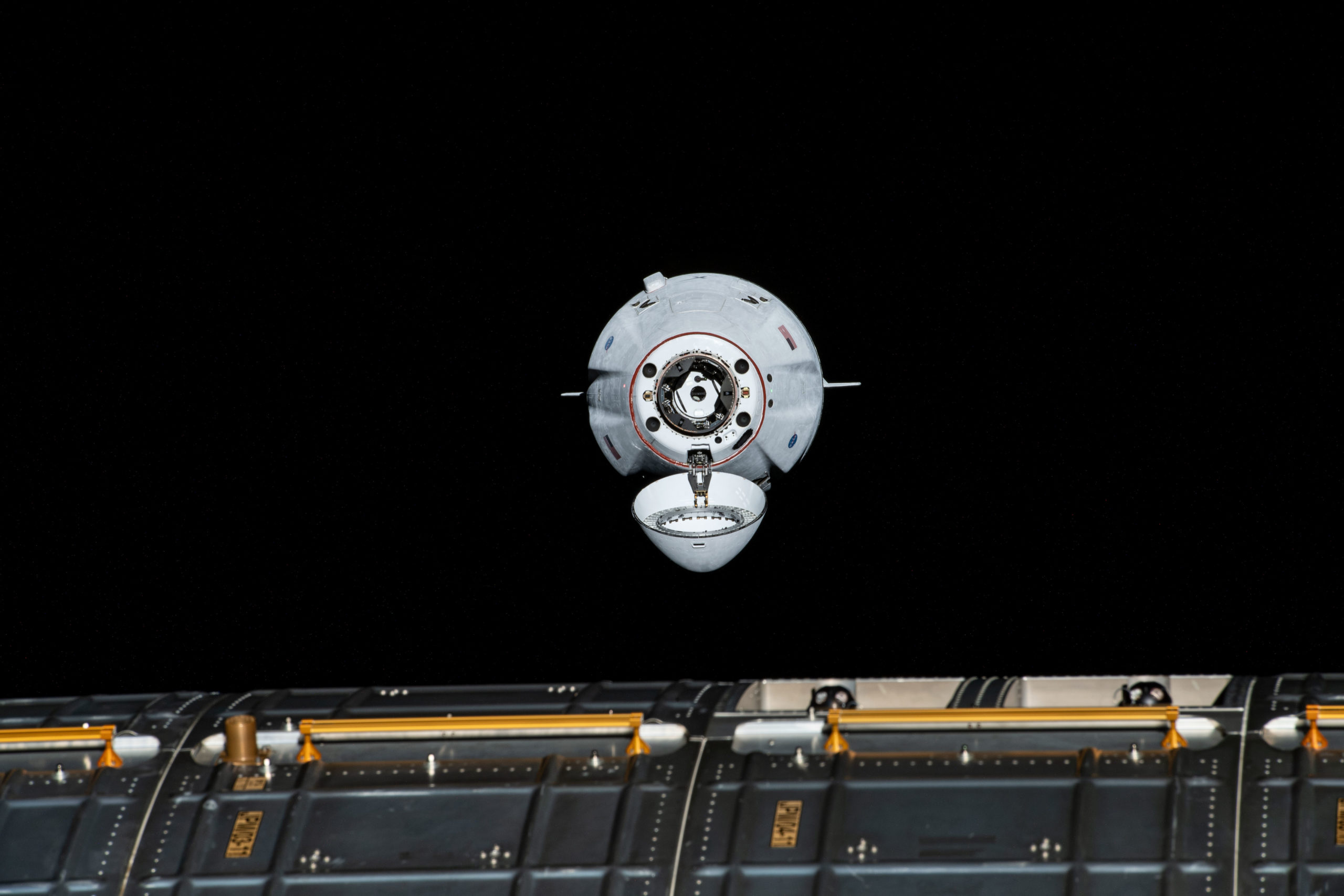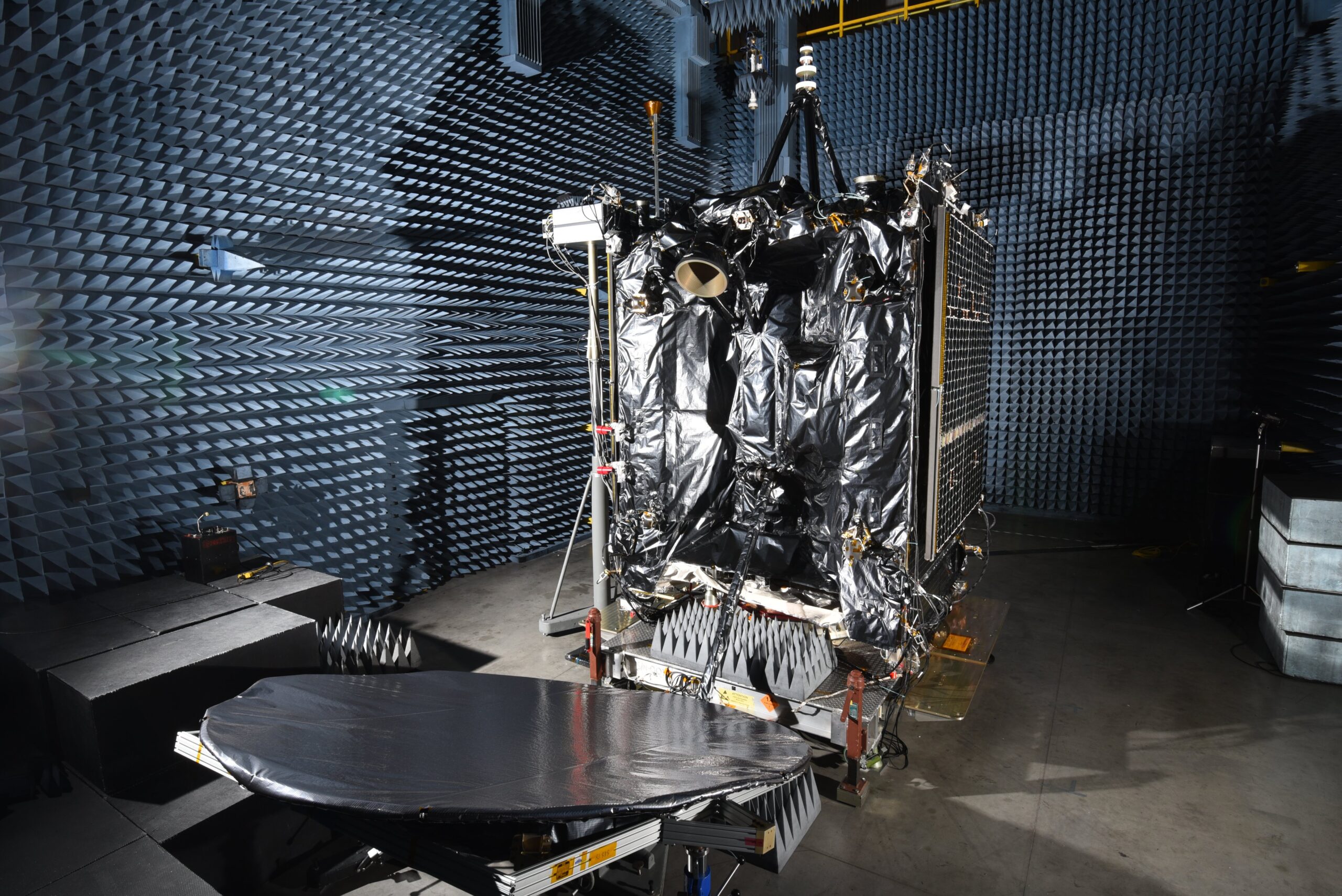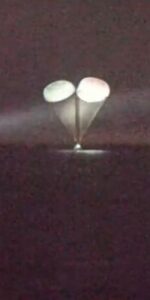
The most flight-seasoned Falcon 9 booster ever entrusted with a mission to the International Space Station (ISS) is primed for liftoff tonight from historic Pad 39A at Florida’s Kennedy Space Center (KSC). Veteran B1073—making her seventh career launch and her second voyage of 2023, having flown most recently only last month—will give the post-sunset Space Coast a new, temporary sunrise at 8:30 p.m. EDT, as she transports a twice-used Cargo Dragon laden with nearly 6,300 pounds (2,850 kilograms) of equipment, payloads and supplies to the station for the incumbent Expedition 68 crew.
Tonight’s mission is also expected to kick off up to three back-to-back Falcon 9 flights from the East and West Coasts in as many days. If all goes well, another pair of rockets may rise from Space Launch Complex (SLC)-4E at Vandenberg Space Force Base, Calif., and storied Space Launch Complex (SLC)-40 at Cape Canaveral Space Force Station, Fla., on Thursday and Friday, respectively laden with a “stack” of Starlink low-orbiting internet communications satellites and the dual-mounted SES-18 and SES-19 geostationary payloads for Luxembourg-headquartered satellite communications provider SES.
Weather conditions for tonight’s CRS-27 mission—which is flying under an extension of the second-round Commercial Resupply Services contract between SpaceX and NASA—initially looked iffy, with a roughly 50-50 chance that Mother Nature would smile upon it. That has now begun to trend upward, with an 80-percent likelihood of acceptable weather tonight, notching up to 95 percent for Wednesday’s 8:08 p.m. EDT “instantaneous” backup opportunity and 90 percent for the third try on Thursday.

“A strong jet stream to the north and approaching mid-level disturbance dropping into the Western Gulf of Mexico will both enhance the mid- and upper-level cloud cover streaming in from the west,” noted the 45th Weather Squadron at Patrick Space Force Base in its Monday afternoon briefing. “These clouds will be the main launch weather this evening, with the potential for Thick Cloud Layer Rule violations if the cloud bases drop below 18,000 feet (5,400 meters).
“The disturbance will move east of the area on Wednesday, clearing the skies as the surface high center moves into the Eastern U.S.,” it added. “As a result, no significant weather is expected for the backup window Wednesday evening.

“The next cold front will be moving across the Gulf of Mexico by Friday evening, with the increasing pressure gradient ahead of the system, bringing strong and gusty south-southeasterly winds for the 72-hour delay,” the 45th concluded. “Any precipitation is expected to reach the area well after the Friday evening launch window; however, the strong winds will pose a Liftoff Wind concern.”
This will be SpaceX’s 17th mission in 2023’s 11th week, an average of launching once every 4.2 days. It will also be the fourth Falcon 9 to fly this month, following on the heels of Crew-6’s just-past-midnight climb to orbit on 2 March, a Starlink-laden flight out of Vandenberg less than 40 hours later and last week’s third mission on behalf of London, England-based OneWeb.
In readiness for the launch and recovery of B1073, the Autonomous Spaceport Drone Ship (ASDS), “A Shortfall of Gravitas”—which has already successfully recovered four Falcon 9 cores this year—put to sea out of Port Canaveral on Sunday, bound for a position offshore in the Atlantic Ocean. The booster itself entered service in May of last year and to date has lofted 157 Starlinks, the SES-22 and Amazonas Nexus geostationary communications satellites and a lunar-bound mission with Japan’s Hakuto-R lander, the United Arab Emirates (UAE) Rashid rover and NASA’s water-ice-seeking Lunar Flashlight.
Flying her seventh mission tonight, B1073 becomes the most flight-seasoned Falcon 9 ever to lift a payload—human or cargo—to the ISS. Last summer’s CRS-25 Cargo Dragon and last April’s historic, all-civilian Ax-1 mission for Houston, Texas-headquartered AxiomSpace, Inc., aboard Dragon Endeavour, both flew atop five-times-flown boosters, the current record.

Yesterday, following the conclusion of the CRS-27 Launch Readiness Review (LRR), NASA’s Phil Dempsey, transportation integration manager for the ISS Program, explained that there exists a set of “criteria that we use…to evaluate the components of a booster”, as part of the decision process in selecting one for flight. He added that the decision is “based on the assessment of the health of a booster” and not upon its number of past missions.
Assuming an on-time launch at 8:30 p.m. EDT Tuesday, B1073 will power the Falcon 9 uphill for the first 2.5 minutes of ascent, under the 1.5 million pounds (680,000 kilograms) of thrust from her suite of nine Merlin 1D+ engines. The core will then separate from the stack to land on ASOG’s deck about 7.5 minutes after launch.

The turn will then come for the single Merlin 1D+ Vacuum engine of the second stage, which will ignite for about six minutes to deliver the Cargo Dragon into its preliminary orbit. Eleven-and-a-half minutes after leaving Florida, CRS-27 will separate from the Falcon 9 and at T+12 minutes and 22 seconds its nose cone will autonomously deploy, exposing its rendezvous sensors and other hardware for a 36-hour chasedown of the station, ahead of a 7:52 a.m. EDT Thursday docking at the forward port of the Harmony node.
In readiness for the cargo ship’s arrival, the incumbent Expedition 68 crew—Commander Sergei Prokopyev and fellow Russian cosmonauts Dmitri Petelin and Andrei Fedyayev, together with U.S. astronauts Frank Rubio, Steve Bowen and Warren “Woody” Hoburg, plus Sultan Al-Neyadi of the United Arab Emirates (UAE)—has been tasked with a range of activities to prepare the station. A robotic survey of the integrity of the Multi-Layered Insulation (MLI) on the forward International Docking Adapter (IDA) was completed on Monday, with a CRS-27 cargo operations review and On-Board Training (OBT) using the Robotics On-Board Trainer (ROBoT) also planned.

After docking, CRS-27 will remain at the ISS for “about a month”, according to Mr. Dempsey’s remarks on Monday. Its 6,300 pounds (2,850 kilograms) of cargo includes a raft of scientific experiments, ranging from heart health to the survivability of radioresistant bacteria, moss spores, amino acids and peptides in microgravity and from a student-designed camera ball clamp to a suite of eight technology experiments flying for Space Systems Command (SSC) under the banner of the Space Test Program (STP).
In addition to research hardware, the Cargo Dragon—which wrapped up its Final Cargo Load late last night—also carries Extravehicular Activity (EVA) tools, vehicle equipment and “a few different cheeses” and fresh fruit, including apples, blueberries, grapefruit, oranges and cherry tomatoes for the Expedition 68 crew. Undocking is provisionally targeting the mid-April timeframe, with NASA outlining that the long-awaited Crew Flight Test (CFT) of Boeing’s CST-100 Starliner will now fly No Earlier Than (NET) 30 April, with expectations that several “open-work” items could push the mission later into the summer.

Although SpaceX reveals precious little in terms of a forward manifest, it is expected that two more missions are waiting in the wings for their own launches in the coming days. A Falcon 9 will lift a Starlink payload out of Vandenberg to an orbit of 350 miles (570 kilometers), inclined 70 degrees to the equator, as early as Thursday morning, followed by another booster with the dual-stacked SES-18 and SES-19 geostationary communications satellites from the Cape on Friday evening.
Built by Northrop Grumman Corp. , SES-18 and SES-19 are equipped with ten C-band transponders and leverage the capabilities of its GeoStar-3 “bus”. These two satellites form part of a group of four SES birds—of which the first pair, SES-20 and SES-21, rode a United Launch Alliance (ULA) Atlas V to orbit early last fall—to spearhead an ongoing campaign to accelerate SES’ C-band clearing plan and meet a Federal Communications Commission (FCC) objective to free up spectrum for 5G terrestrial wireless services.

Back in June 2020, SpaceX was selected as the launch provider for SES-18 and SES-19. These two new satellites will help to facilitate the broadcast delivery of digital television to nearly 120 million homes.
Weather conditions for a Friday launch are about 70-percent-favorable, according to the 45th Weather Squadron in a Tuesday update, with a risk of violating the Liftoff Winds Rule. Conditions are predicted to worsen to only 35-percent-favorable for a backup attempt on Saturday, as a cold front beats a path into Florida, bringing with it a pattern of disturbed weather, including showers, thunderstorms and perhaps lightning.





